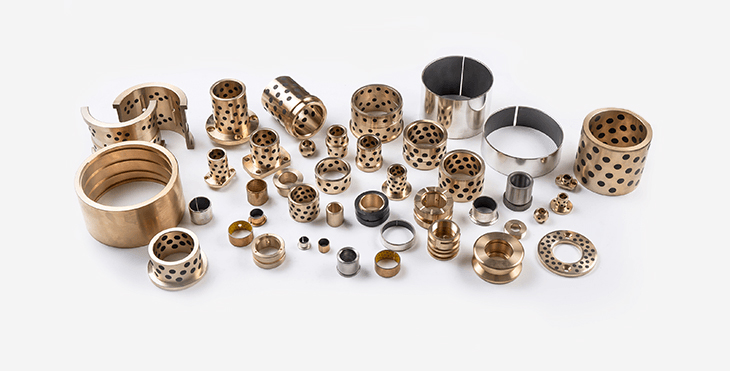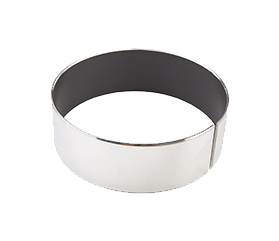The MXB-DUF oil-free composite bearing, also known as the SF-1F bushing, is a three-layer composite structure bearing. It typically consists of a steel plate layer, a copper powder layer, and a plastic layer. The steel plate layer serves for assembly positioning and pressure bearing, the copper powder layer acts as a bridge connecting the plastic and aids in reducing friction, while the plastic layer primarily provides wear resistance and self-lubrication. This structure endows the SF-1F bushing with excellent mechanical load-bearing capacity and wear resistance.
The MXB-DUF oil-free composite bearing is renowned for its self-lubricating properties. It can provide continuous lubrication during friction without the need for external lubrication, thereby reducing the friction coefficient and wear. This self-lubricating characteristic enables the SF-1F bushing to significantly reduce noise and vibration in applications, enhancing the operational efficiency and service life of equipment. Furthermore, the SF-1F bushing exhibits good corrosion resistance and high-temperature resistance, maintaining stable performance in harsh working environments. Additionally, the innovative flange design not only reinforces the bushing's fixation in the bearing housing but also optimizes its support performance and stability, contributing to extended service life and reduced maintenance.
The SF-1F bushing is widely used in various mechanical devices that require linear or rotary motion. For example, in the fields of machine tools, automation equipment, and automobile manufacturing, the SF-1F bushing is commonly used to support and guide moving parts, ensuring precise operation and high-efficiency performance of the equipment. Moreover, due to its self-lubricating properties and wear resistance, it is often used in heavy-load, low-speed, or hard-to-lubricate applications. In specific industries, such as mining machinery and metallurgical machinery, the SF-1F bushing also plays a vital role, effectively improving the reliability and durability of the equipment.




 English
English Español
Español































